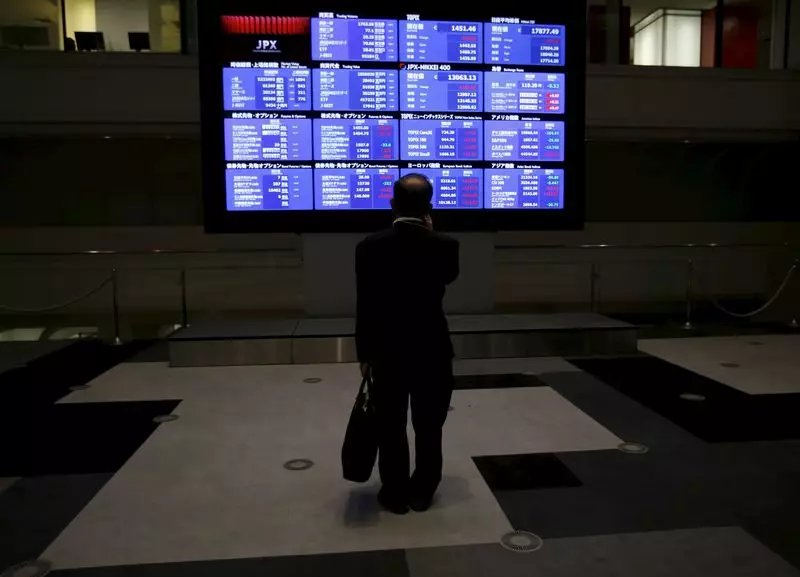The Asian stock markets exhibited minimal movement in early trading on a holiday Monday, reflecting investor hesitancy in light of recent developments from mainland China. With the yield of promised economic stimulus measures ringing hollow due to their lack of specific details, market players are left on edge. The Chinese government, led by Finance Minister Lan Foan, has committed to significantly increasing their debt levels, yet the specifics about the scale of this economic intervention remain ambiguous. Such vagueness has left investors guessing about the sustainability of any potential stock market rally that might arise from these promises.
Recent advancements in Chinese equity markets have been noteworthy, following an announcement of an aggressive stimulus plan—its most comprehensive since the onset of the pandemic. However, the market’s momentum has noticeably slowed as investors await further clarity on the measures intended to support economic growth. Ray Attrill, a leading strategist at National Australia Bank, emphasized that the anticipation of a more robust fiscal stimulus announcement over the weekend led to heightened expectations, which were ultimately unmet. This could potentially lead to disappointment when markets in Asia reopen.
The context of investor sentiment is further complicated by new economic data from China that was released over the weekend. Consumer inflation unexpectedly eased in September, raising alarms about the strength and resilience of the Chinese economy. Additionally, producer prices have shown a deepening of deflationary trends, which only amplifies calls for more comprehensive stimulus measures. The data complicates the expected outcomes of the stimulus efforts and prompts skepticism about their effectiveness in reversing current economic headwinds.
As a reflection of market sentiment, the offshore yuan fell by 0.2% against the U.S. dollar early in the week, illustrating a tangible response to the disappointment surrounding the lack of clear guidance from the government. The Australian dollar, which often acts as a barometer for sentiment toward the Chinese economy, also saw a slight dip, evidencing a cautious approach among traders regarding the upcoming economic landscape.
In spite of the prevailing uncertainty, some analysts remain cautiously optimistic regarding China’s macroeconomic outlook. Goldman Sachs recently upgraded its forecast for China’s real GDP growth from 4.7% to 4.9% due to the promise of more robust and coordinated stimulus measures. However, the bank’s analysts also noted that “structural challenges” — including declining demographics, ongoing debt deleveraging, and shifting global supply chain dynamics — continue to pose significant barriers to sustainable growth.
As investors await forthcoming data regarding third-quarter GDP, anticipated later this week, the focus remains on how these indicators will align with the government’s fiscal measures. There is an underlying concern that the structural issues plaguing the economy may not be resolved merely by stimuli intended to boost cyclical growth.
In the realm of currency trading, movements appeared muted as the U.S. dollar retained its strength, bolstered by diminished expectations of significant interest rate cuts from the Federal Reserve next month. Recent labor market data and inflation figures suggest continued economic resilience in the United States, which influences perceptions around foreign exchange dynamics.
Meanwhile, the British pound and euro experienced minor declines against the dollar, reflecting a more comprehensive tendency towards caution among global investors. The Fed’s previous remarks regarding its monetary policy have tempered market predictions, leading traders to cautiously navigate forthcoming economic indicators.
In commodities, market sentiments have redirected focus toward oil prices, which fell sharply in response to China’s lack of clarity surrounding its economic stimulus efforts. Brent crude oil and West Texas Intermediate crude both dipped substantially, feeding fears of reduced demand amidst uncertainty in China. Additionally, gold prices experienced a slight increase, reflecting the ongoing demand for safe havens in turbulent times.
While some constructive promises have been made concerning China’s economic support, the vagueness of those commitments leaves investors in a precarious position. As key economic indicators loom on the horizon, the outcomes may lay a foundation for future sentiment in Asian markets. Until then, caution appears to be the prevailing sentiment as traders grapple with a complex global economic landscape.

